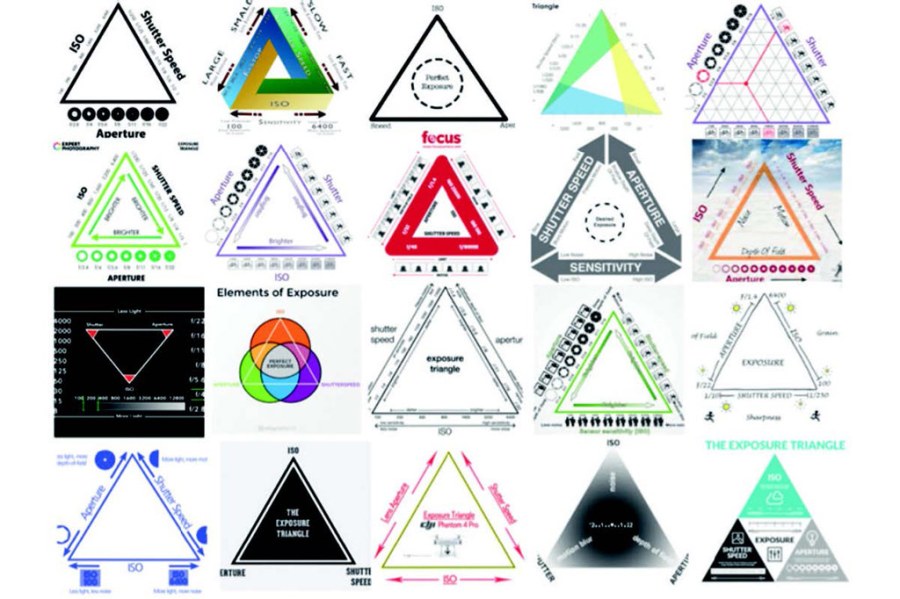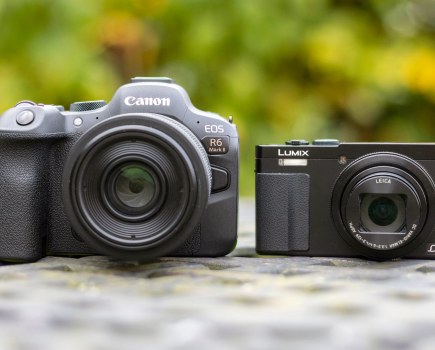When I studied photography back in the 1960s the exposure triangle hadn’t been invented. It first appeared only in 1990, in Bryan Peterson’s book Understanding Exposure, under the name ‘the photographic triangle’.
The three sides of the triangle were aperture, shutter speed and film. There was no graphic to support the written description. By the time of the book’s second edition, in 2004, the ‘film’ side had changed to ‘ISO’, presumably in response to the development of digital cameras, which had an ISO control.
Subsequently, the triangle has become a digital-age phenomenon, with the majority of introductory tutorials on photography deploying this device somewhere or the other. It has become so ubiquitous that I have seen it referred to in articles as part of the fundamental theory of photography. It was never that – had it been, it would not have been possible for several generations of photographers to practise before it was invented.
Exposure Triangle – Misleading inferences
For myself, I have never been able to work out exactly what the triangle is intended to convey. Not many of the tutorials that use the triangle actually say anything about this, and it isn’t obvious from the geometry.
The relationship between aperture, shutter speed and ISO does not obey the geometrical rules of a triangle. I have been told that the triangle implies there must be a ‘balance’ between the three. One unhelpful factor is that the people who teach using this triangle don’t seem to agree on the morphology of the diagram.
In the illustration above there are 20 different versions of the triangle. They differ in important aspects: in some, the three parameters are represented by the sides of the triangle; in others, they are represented by the corners. The arrangement of the ‘darker’ and ‘lighter’ ends of the scale varies among those who choose to label the sides.
What’s wrong with the exposure triangle?
In some, for all three corners it is a light end adjacent to a dark end; in others the aperture and shutter converge to a dark (or light) point and the ISO connects two light (or dark) points. Some are adorned with scales, which suggests there is some calculation that could be performed with the triangle; others are plain.
However, of more concern is the fact that several of these triangles contain false statements or imply things that are not true. Four of them place the word ‘exposure’, suggesting that the three sides together make up the exposure. This is incorrect.
Exposure is the illuminance at the image plane, and is controlled by the scene luminance, aperture and shutter only. (The reason that changing ISO changes exposure on your camera is that it sets the metering to a different exposure).
Several of them label the ISO side ‘sensitivity to light’ and some, worse, say that a higher ISO gives ‘more light’. This is wrong. The camera’s sensor doesn’t become more ‘sensitive to light’ as you raise the ISO; neither does more light become available.
Then, there is the suggestion that raising ISO ‘increases noise’. This is a misattribution of causality. As said above, raising ISO adjusts the meter to seek a smaller exposure, and it is that smaller exposure which makes the image noisier. If you raised ISO without adjusting the other two controls, the image would be slightly less noisy.
It’s sad that many photographers make the same mistakes when working with exposure, and it’s possible that this arises from the misleading inferences that come from the triangle diagram. It could also just be the teaching that goes with it. Every single tutorial I have seen that uses the triangle as a pedagogic aid includes serious errors in its text.
 Bob Newman is currently Professor of Computer Science at the University of Wolverhampton. He has been working with the design and development of high-technology equipment for 35 years and two of his products have won innovation awards. Bob is also a camera nut and a keen amateur photographer.
Bob Newman is currently Professor of Computer Science at the University of Wolverhampton. He has been working with the design and development of high-technology equipment for 35 years and two of his products have won innovation awards. Bob is also a camera nut and a keen amateur photographer.
Related reading:
- Guide to exposure, aperture, shutter and ISO speeds
- Master long-exposure photography
- Are smaller pixels worse?
Follow AP on Facebook, Twitter, Instagram, YouTube and TikTok.







